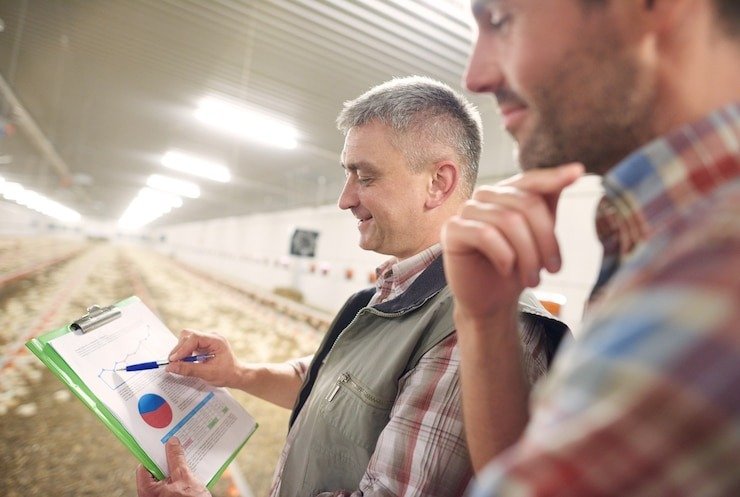Introduction
A combination square is an essential tool in agriculture, widely used for measuring, marking, and ensuring precise angles in various farming activities. Whether you are involved in constructing farm structures, maintaining agricultural equipment, or setting up irrigation systems, this versatile tool can significantly improve accuracy and efficiency. In this article, we will explore how to use a combination square in agriculture effectively, covering its applications, benefits, and best practices.
What is a Combination Square?
A combination square is a multi-purpose measuring tool consisting of a ruler (or blade) and an adjustable head that allows you to measure different angles, check depth, and mark straight lines. It typically includes:
- A steel rule with precise markings for measurements.
- A square head for checking 90° and 45° angles.
- A spirit level for checking the level and plumb.
- A scribing tool for marking points on wood, metal, or plastic.
This tool is widely used in construction, metalworking, and, most importantly, agriculture.
Why is a Combination Square Important in Agriculture?
Agriculture involves various tasks that require precision, from building storage sheds to maintaining farm equipment. A combination square ensures accuracy in measurements, making tasks easier and more efficient. Here are some key reasons why farmers and agricultural workers should use a combination square:
✅ Ensures precise measurements – Helps in cutting and assembling wooden and metal structures.
✅ Improves efficiency – Reduces errors and rework, saving time and resources.
✅ Increases durability – Ensures proper alignment of farm structures and equipment for longer-lasting use.
✅ Versatile tool – Can be used for a wide range of applications, from irrigation setup to machinery maintenance.
How to Use a Combination Square in Agriculture
1. Checking and Marking Angles
One of the primary uses of a combination square is to check and mark angles. In agriculture, accurate angles are crucial when building fences, barns, and storage units.
- Checking 90° Angles: Place the square head against the edge of the material and draw a straight line along the ruler. This ensures perfect right angles for framing structures.
- Marking 45° Angles: If you need to cut materials at a 45-degree angle (e.g., for rafters or supports), align the ruler accordingly and mark the angle.
2. Measuring Depth for Planting and Irrigation
Proper planting depth is essential for healthy crop growth. A combination square can be adjusted to a specific depth and used as a guide when planting seeds or setting up irrigation channels.
- Set the ruler to the desired depth.
- Insert the square into the soil to check the consistency of planting depth.
- Use it for measuring the depth of irrigation ditches or water channels.
3. Aligning and Leveling Farm Structures
Whether you’re building a greenhouse, fence, or barn, leveling is crucial to ensure stability.
- Use the built-in spirit level to check if surfaces are even.
- Adjust wooden beams or metal bars based on the level reading.
- Prevent structural weaknesses by ensuring precise alignment.
4. Marking Straight Lines for Cutting
A combination square is invaluable for marking straight lines on wood, metal, or plastic. This is particularly useful in:
- Cutting wooden boards for fences or sheds.
- Preparing metal sheets for farm equipment repairs.
- Marking materials before drilling or welding.
5. Ensuring Accuracy in Equipment Maintenance
Farm machinery requires proper alignment for optimal performance. A combination square helps in checking angles and alignment in:
- Tractor blade adjustments.
- Welding farm equipment parts.
- Setting up cutting guides for metal or woodwork.
Best Practices for Using a Combination Square in Agriculture
To maximize the benefits of a combination square, follow these best practices:
✔ Keep the tool clean – Dirt and rust can affect accuracy. Clean after every use.
✔ Check for accuracy – Test your square by drawing a line, flipping it, and redrawing it to ensure alignment.
✔ Use the right blade size – Longer blades provide more accuracy in larger agricultural projects.
✔ Store properly – Avoid dropping it, as it may misalign the ruler or damage the spirit level.
Quick Facts About Combination Squares
- 📏 First invented in the late 19th century and remains a vital tool today.
- 🏗 Used in construction, metalworking, and woodworking besides agriculture.
- ⚙ Common materials include stainless steel for durability in outdoor use.
- 🔍 Includes a built-in level for added precision in alignment tasks.
Conclusion
A combination square is a must-have tool in agriculture, ensuring precise measurements, perfect angles, and efficient farm operations. From constructing barns to maintaining farm equipment, this tool enhances accuracy and productivity. By following best practices and using a combination square correctly, farmers and agricultural workers can significantly improve their workflow and achieve better results.
Would you like to see a step-by-step guide with images for using a combination square in farming tasks? Let me know! 🚜
